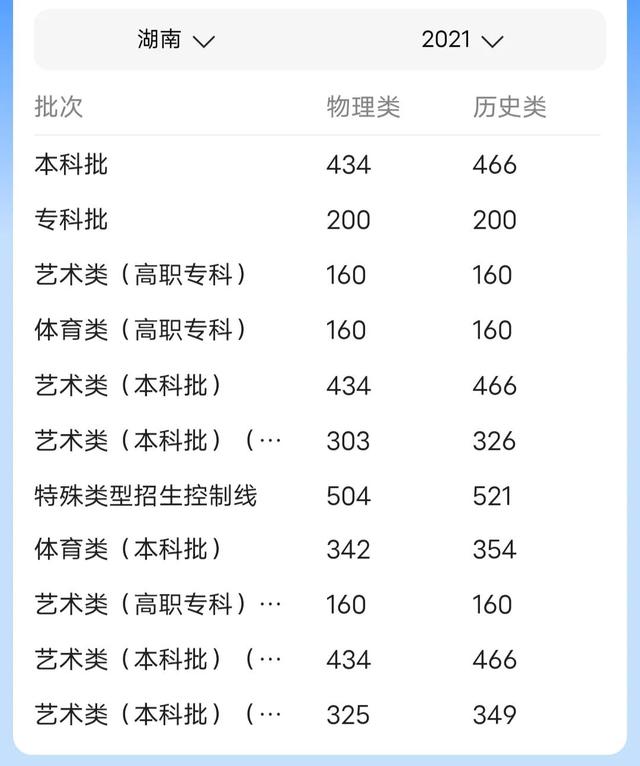综合自然地理学知识点(A-Level地理核心自然地理学习主要内容总结)
A-Level | 地理 Geography
CIE A-Level地理的考生将学习以下主题:
核心自然地理学:水文和河流地貌、大气和天气、岩石和风化
核心人文地理:人口、移民、结算动态
高级自然地理:热带环境、沿海环境、危险环境、热干旱和半干旱环境
高级人文地理:生产、地点和变化、环境管理、全球相互依存、经济转型
本文将为大家总结讲解AS阶段的核心自然地理学的主要内容,以下内容全是干货!!!

核心自然地理学
Paper 1 Core Physical Geography
1
Hydrology and fluvial geomorphology
水文和河流地貌
1.1 The drainage basin system流域系统
输出:蒸发、蒸散和河流排放。
蓄水:截流、土壤水、地表水、地下水、渠道蓄水。
水流:地上——直流、干流、地表流和渠道流。
地下——渗透、渗滤、穿流、地下水和基流。
地下水:地下水位、地下水、补给水和泉水。
Outputs: evaporation, evapotranspiration and River discharge.
Stores: interception, soil water, surface water, groundwater, and Channel storage.
Flows: above ground – throughfall, stemflow, overland flow, and channel flow.
below ground – infiltration, percolation, throughflow, groundwater, and baseflow.
Underground water: water tables, ground water, recharge, and springs.
1.2 Discharge relationships within drainage basins流域内流量关系
水文图的组成部分(风暴和年度)。对水文曲线的影响。
气候:降水类型和强度、温度、蒸发量、蒸腾量、蒸散量和前期水分。
流域特征:大小和形状、排水密度、土壤的孔隙率和渗透性、岩石类型、坡度、植被类型和土地利用。
Components of hydrographs (storm and annual). Influences on hydrographs.
Climate: precipitation type and intensity, temperature, evaporation, transpiration, evapotranspiration, and antecedent moisture.
drainage basin characteristics: size and shape, drainage density, porosity and permeability of soils, rock type, slopes, vegetation type, and land use.

1.3 River channel processes and landforms河道过程与地貌
渠道流程
侵蚀:磨损/腐蚀、溶解、气蚀和液压作用。
负载运输:牵引、跳跃、悬浮和溶液。
沉积和沉降:Hjülstrom 曲线。
河流流量:流速和流量、流动模式(层流、湍流和螺旋)和 thalweg。
通道类型:直的、编织的和曲折的。
地貌:蜿蜒曲折(河崖、点酒吧、牛轭湖)、浅滩和水池序列、瀑布、峡谷、悬崖、洪泛区、堤坝和三角洲。
Channel processes
Erosion: abrasion/corrasion, solution, cavitation, and hydraulic action.
Load transport: traction, saltation, suspension, and solution.
deposition and sedimentation: the Hjülstrom curve.
River flow: velocity and discharge, patterns of flow (laminar, turbulent and helicoidal), and thalweg.
Channel types: straight, braided, and meandering.
Landforms: meander (river cliffs, point bars, oxbow lakes), riffle and pool sequences, waterfalls, gorges, bluffs, floodplains, levées, and deltas.
1.4 The human impact人类影响
通过土地利用变化(砍伐森林、植树造林、城市化)、取水和蓄水来改变集水区流量和蓄水量以及引导流量。
河流洪水的原因和影响;预测洪水风险和复发间隔。预防和改善河流洪水包括:
· 预报和警告
· 硬工程——水坝、矫直、堤坝和导流溢洪道
· 软工程——洪泛区和流域管理、湿地和河岸保护以及河流恢复。
案例研究:候选人必须研究最近的河流洪水事件,显示洪水的原因、对人和环境的影响,并评估减少洪水影响的尝试。
Modifications to catchment flows and stores and to channel flows by land-use changes (deforestation, afforestation, urbanisation), abstraction and water storage.
The causes and impacts of river floods; prediction of flood risk and recurrence intervals. The prevention and amelioration of river floods to include:
· forecasts and warnings
· hard engineering – dams, straightening, levées and diversion spillways
· soft engineering – floodplain and drainage basin management, wetland and river bank conservation and river restoration.
Case study: candidates must study a recent river flood event showing the causes of the flood, impacts on both people and the environment, and evaluate attempts to reduce the impact of the flood.

2
Atmosphere and Weather
大气和天气
2.1 Diurnal energy budgets 日能量收支
影响昼夜能量收支的因素:入射(短波)太阳辐射、反射太阳辐射、地表和地下吸收的能量、反照率、显热传递、长波辐射、潜热传递——蒸发、露水和返回地球的吸收能量。
Factors affecting diurnal energy budget: incoming (shortwave) solar radiation, reflected solar radiation, energy absorbed into the surface and subsurface, albedo, sensible heat transfer, longwave radiation, latent heat transfer – evaporation, dew and absorbed energy returned to earth.
2.2 The global energy budget 全球能源预算
辐射的纬度模式:过量和不足。大气转移:风带和洋流。
温度、压力和风带的季节性变化:纬度、陆地/海洋分布和洋流的影响。
The latitudinal pattern of radiation: excesses and deficits. Atmospheric transfers: wind belts and ocean currents.
Seasonal variations in temperature, pressure and wind belts: the influence of latitude, land/sea distribution, and ocean currents.
2.3 Weather processes and phenomena 天气的过程和现象
大气水分过程:蒸发、冷凝、冻结、熔化、沉积和升华。
降水的成因:对流、空气的锋面和地形抬升以及辐射冷却。降水类型:云、雨、冰雹、雪、露水和雾。
Atmospheric moisture processes: evaporation, condensation, freezing, melting, deposition, and sublimation.
Causes of precipitation: convection, frontal and orographic uplift of air, and radiation cooling. Types of precipitation: clouds, rain, hail, snow, dew, and fog.
2.4 The human impact 人类影响
温室效应增强和全球变暖:证据、可能原因和大气影响。
案例研究:候选人必须研究显示人类活动对气候影响的城市区域:温度(热岛)、湿度、降水和风。
The enhanced greenhouse effect and global warming: the evidence, possible causes and atmospheric impacts.
Case study: candidates must study an urban area which shows the effects of human activity on climate: temperature (heat island), humidity, precipitation and winds.

3
Rocks and Weathering
岩石和风化
3.1 Plate tectonics 板块构造
构造板块的性质及其全球格局。
板块边界的类型:发散的(建设性的)、保守的和收敛的(破坏性的)。
过程及相关地貌:海底扩张、俯冲、褶皱造山、海洋
山脊、海沟和火山岛弧。
Nature of tectonic plates and their global patterns.
Types of plate boundaries: divergent (constructive), conservative and convergent (destructive).
Processes and associated landforms: sea floor spreading, subduction, fold mountain building, ocean
ridges, ocean trenches, and volcanic island arcs.
3.2 Weathering 风化
物理(机械)风化过程:冻融、加热/冷却、盐晶体生长、
压力释放(扩张)和植被根系作用。
化学风化过程:水解、水化和碳化。
影响风化类型和速率的一般因素:气候、岩石类型、岩石结构、
植被和救济。
影响风化类型和速率的具体因素:温度和降雨量(珀尔帖图)。
Physical (mechanical) weathering processes: freeze-thaw, heating/cooling, salt crystal growth,
pressure release (dilatation), and vegetation root action.
Chemical weathering processes: hydrolysis, hydration, and carbonation.
General factors affecting the type and rate of weathering: climate, rock type, rock structure,
vegetation, and relief.
Specific factors affecting the type and rate of weathering: temperature and rainfall (Peltier diagram).

3.3 Slope processes 斜坡过程
斜坡过程,每个过程发生的条件和对斜坡的影响。
群众运动:起伏、流动、滑动和跌落。
斜坡上的水和泥沙运动:雨水和地表径流(水洗和小溪)。
Slope processes, conditions under which each occurs and effects on slopes.
Mass movement: heaves, flows, slides, and falls.
Water and sediment movement on slopes: rainsplash and surface runoff (sheetwash and rills).
3.4 The human impact 人类影响
人类活动对边坡稳定性的影响:增加稳定性和降低稳定性。
修改斜坡以减少群众运动的策略:钉扎、网、分级和植树造林。
案例研究:候选人必须研究人类活动对斜坡的影响,以显示对斜坡的影响
斜坡的稳定性,并评估减少群众运动的尝试。
The impact of human activities on the stability of slopes: increasing stability and decreasing stability.
Strategies to modify slopes to reduce mass movements: pinning, netting, grading and afforestation.
Case study: candidates must study the impacts of human activity on slopes showing the effect on
the stability of the slope, and evaluate attempts to reduce mass movement.
,免责声明:本文仅代表文章作者的个人观点,与本站无关。其原创性、真实性以及文中陈述文字和内容未经本站证实,对本文以及其中全部或者部分内容文字的真实性、完整性和原创性本站不作任何保证或承诺,请读者仅作参考,并自行核实相关内容。文章投诉邮箱:anhduc.ph@yahoo.com






